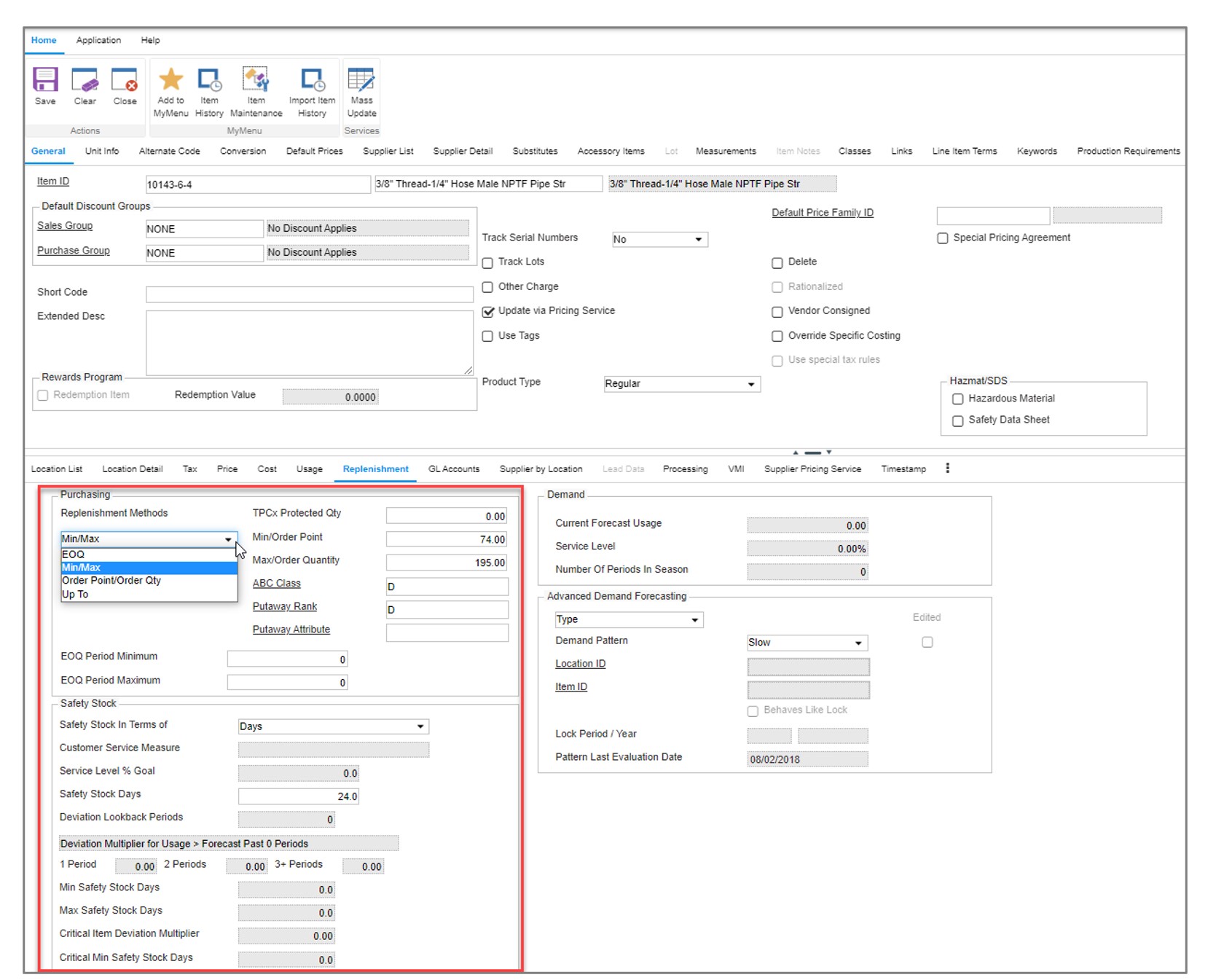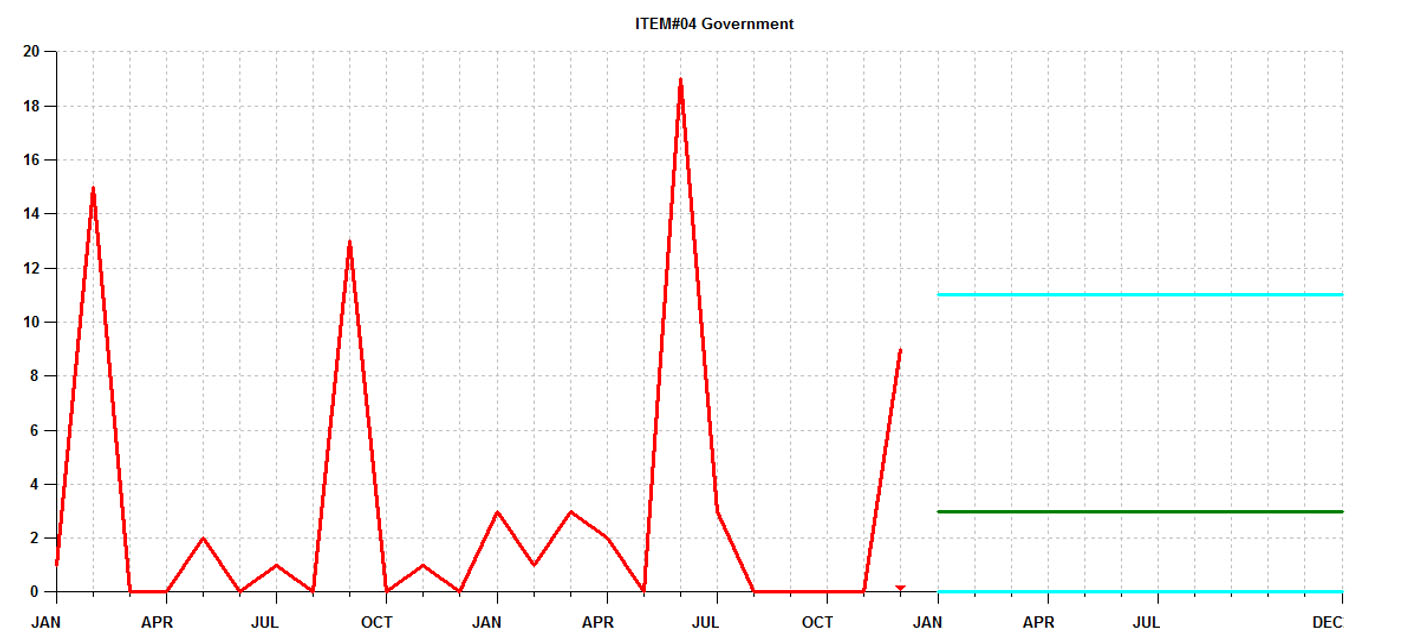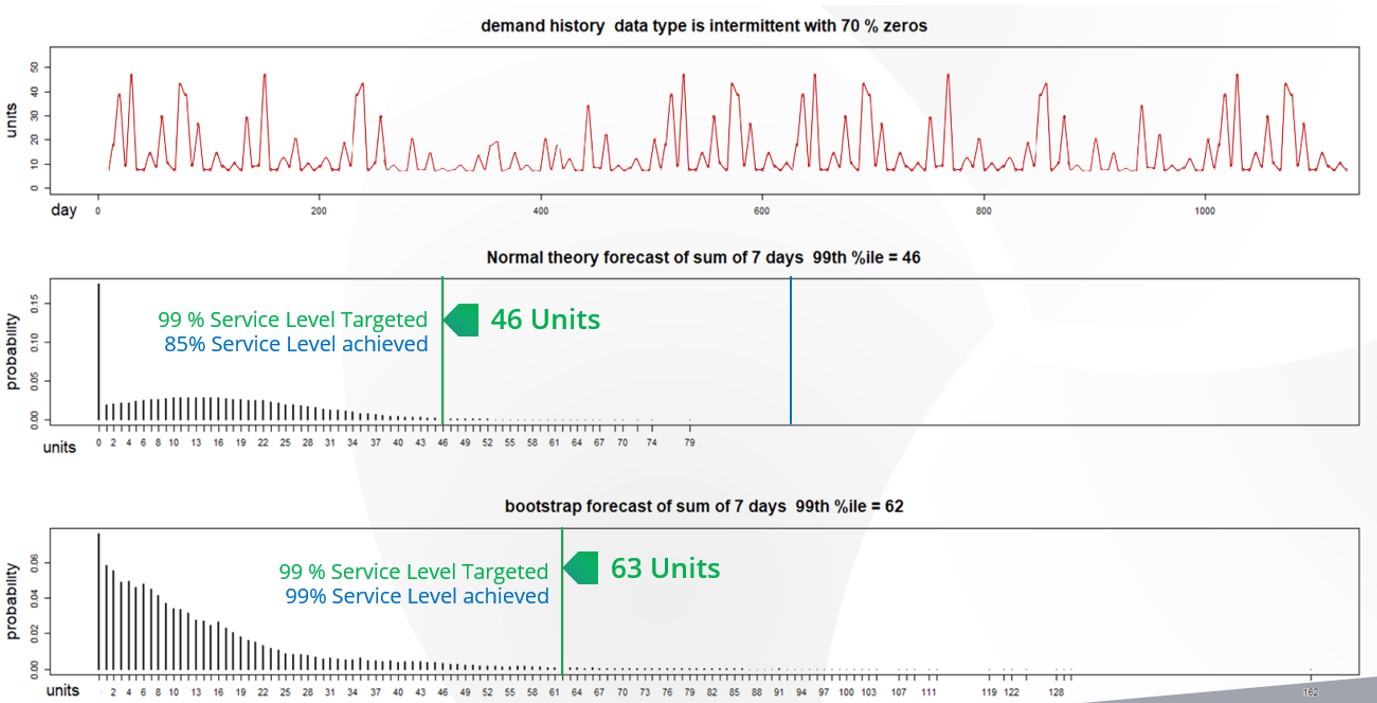Microsoft Dynamics 365 F&SC and AX can manage replenishment by suggesting what to order and when via reorder point-based inventory policies. A challenge that customers face is that efforts to maintain these levels are very detailed oriented and that the ERP system requires that the user manually specify these reorder points and/or forecasts. As an alternative, many organizations end up generating inventory policies by hand using Excel spreadsheets or using other ad hoc approaches.
These methods are time-consuming and both likely result in some level of inaccuracy. As a result, the organization will end up with excess inventory, unnecessary shortages, and a general mistrust of their software systems. In this article, we will review the inventory ordering functionality in AX / D365 F&SC, explain its limitations, and summarize how Smart Inventory Planning & Optimization can help improve a company’s cash position. This is accomplished by reduced inventory, minimized and controlled stockouts. Use of Smart Software delivers predictive functionality that is missing in Dynamics 365.
Microsoft Dynamics 365 F&SC and AX Replenishment Policies
In the inventory management module of AX and F&SC, users can manually enter planning parameters for every stock item. These parameters include reorder points, safety stock lead times, safety stock quantities, reorder cycles, and order modifiers such as supplier imposed minimum and maximum order quantities and order multiples. Once entered, the ERP system will reconcile incoming supply, current on hand, outgoing demand, and the user defined forecasts and stocking policies to net out the supply plan or order schedule (i.e., what to order and when).
There are 4 replenishment policy choices in F&SC and AX: Fixed Reorder Quantity, Maximum Quantity, Lot-For-Lot and Customer Order Driven.
- Fixed Reorder Quantity and Max are reorder point-based replenishment methods. Both suggest orders when on hand inventory hits the reorder point. With fixed ROQ, the order size is specified and will not vary until changed. With Max, order sizes will vary based on stock position at time of order with orders being placed up to the Max.
- Lot-for Lot is a forecasted based replenishment method that pools total demand forecasted over a user defined time frame (the “lot accumulation period”) and generates an order suggestion totaling the forecasted quantity. So, if your total forecasted demand is 100 units per month and the lot accumulation period is 3 months, then your order suggestion would equal 300 units.
- Order Driven is a make to order based replenishment method. It doesn’t utilize reorder points or forecasts. Think of it as a “sell one, buy one” logic that only places orders after demand is entered.
Limitations
Every one of F&SC / AX replenishment settings must be entered manually or imported through custom uploads created by customers. There simply isn’t any way for users to natively generate any inputs (especially not optimal ones). The lack of credible functionality for unit level forecasting and inventory optimization within the ERP system is why so many AX and F&SC users are forced to rely on spreadsheets for planning and then manually set the parameters the ERP needs. In reality, most planners end up manually set demand forecasts and reordering.
And when they can use spread sheets, they often rely on wide rule of thumb methods that results in using simplified statistical models. Once calculated in the spread sheet these must be loaded into F&SC/AX. They are often either loaded via cumbersome file imports or manually entered. Because of the time and effort, it takes to build these, companies do not frequently update these numbers.
Once these are set in place, organizations tend to employ a reactive approach to changes. The only time a buyer/planner reviews inventory policy is annually or at the time of purchases or manufacturing. Some firms will also react after encountering problems with inventory levels being short (or too high). Managing this in AX and F&AS requires manual interrogation to review history, calculate forecasts, assess buffer positions, and to recalibrate.
Microsoft recognizes these constraints in their core ERPs and understands the significant challenges to customers. In response Microsoft has positioned forecasting under their AI Azure stack. This method is outside of the core ERPs. It is offered as a tool set for Data Scientists to use in defining custom complex statistics and calculations as a company wishes. This is in addition to some basic simple calculations as a starting point are currently in their start up phases of development. While this may hold long term gains, currently this method means customers start from near scratch and define what Microsoft currently called ‘experiments’ to gauge demand planning.
The bottom line is that customers face large challenges in getting the Dynamics stack itself to help solve these problems. The result is for CFOs to have less cash available for what they need and for Sales Execs to have sales opportunities unfilled and a potential loss of sales because the firm can’t ship the goods the customer wants.
Get Smarter
Wouldn’t it be better to simply leverage a best of breed add-on for demand planning; and a best of breed inventory optimization solution to manage and balance costs and fulfilment levels? Wouldn’t it be better to be able to do this on a daily or weekly basis to make your decisions closest to the need, preserving cash while meeting sales demand?
Imagine having a bidirectional integration with AX and F&AS so this all operates easily and quickly. One where:
- you could automatically recalibrate policies in frequent planning cycles using field proven, cutting-edge statistical models,
- you would be able to calculate demand forecasts that account for seasonality, trend, and cyclical patterns,
- You would automatically leverage optimization methods that prescribe the most profitable stocking policies and service levels that consider the real costs of carrying inventory and stock outages, giving you a full economic picture,
- You could free up cash for use within the company and manage your inventory levels to improve order fulfillment at the same time as you free this cash.
- you would have safety stocks and inventory levels that would account for demand and supply variability, business conditions, and priorities,
- you’d be able to target specific service levels by groups of products, customers, warehouses, or any other dimension you selected,
- you increase overall company profit and balance sheet health.
Extend Microsoft 365 F&SC and AX with Smart IP&O
To see a recording of the Microsoft Dynamics Communities Webinar showcasing Smart IP&O, register here:
https://smartcorp.com/inventory-planning-with-microsoft-365-fsc-and-ax/






